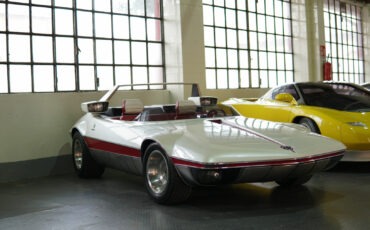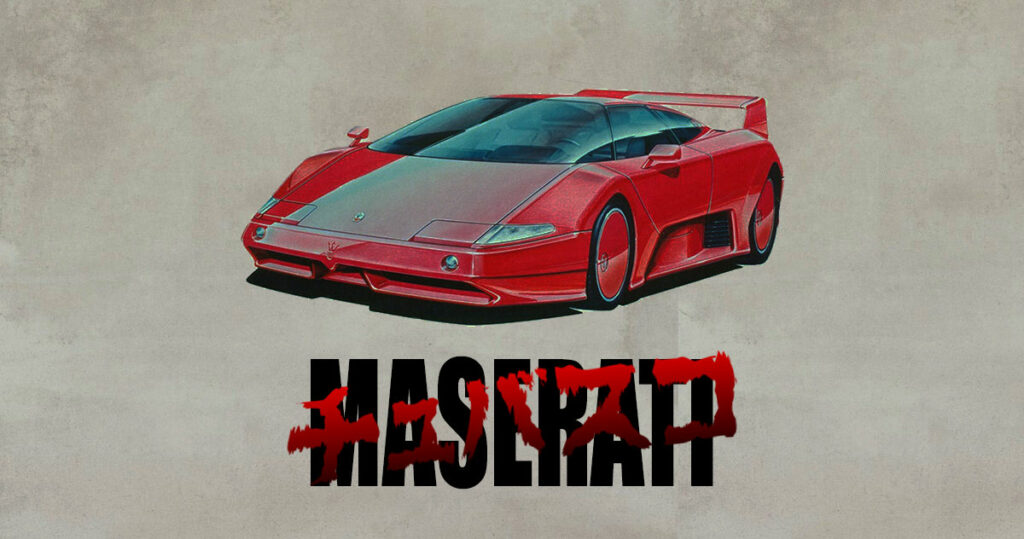
The origin
On 14 December 1990, under the management of De Tomaso, on the anniversary of Officine Maserati, the “tridente” brand unveiled its new models.
Along with the Shamal, presented in its final form, and the “Racing” (a sports coupe derived from the Maserati Biturbo), Maserati unveiled also one of the most innovative and stunning prototypes in its history: the Maserati Chubasco which its production should have started two years later, becoming the most advanced and innovative super car of the Trident brand. Marcello Gandini, famous for having designed the world most extreme sports cars for Bertone, was commissioned the design and project of this very high performance car created with the most advanced technologies of the early nineties.
A functional "Cyber Punk" design by Marcello Gandini
From the very first, it was immediately clear that the Chubasco would become a truly revolutionary car in every aspect. Technology and mechanics were under a futuristic designed cyber punk body, which aerodynamics were developed with the aim to make the Chubasco a high performance car.
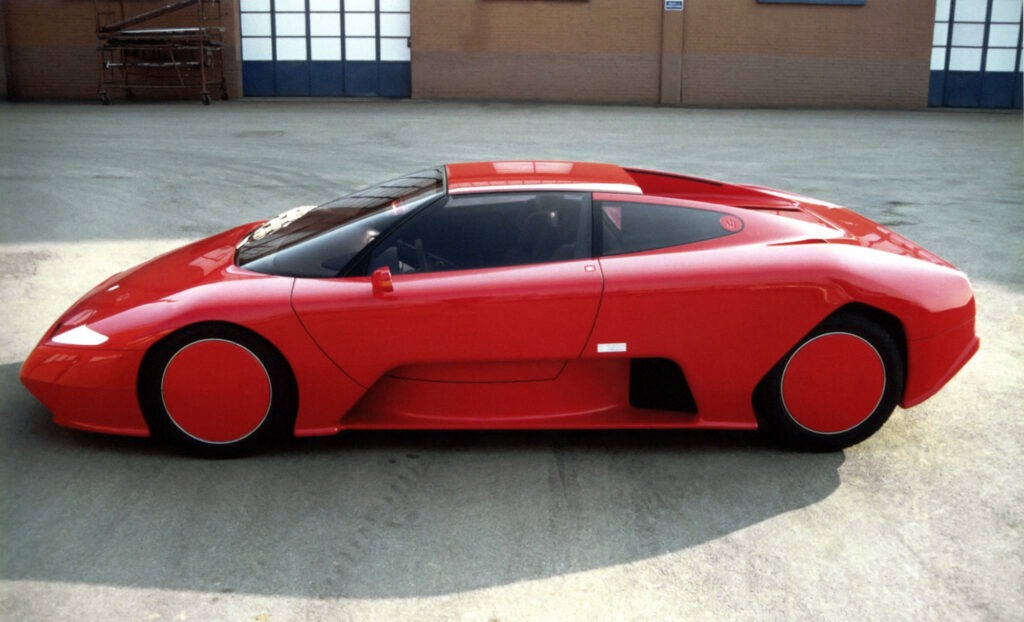
Some oscillating supports separated the lower structure (the chassis and mechanics) from the upper part (the body), isolating the occupants from the vibrations reducing the noises.
Scissors doors allowed an easy access, with windows created to maximize lateral visibility, usually very poor in mid-rear engine cars. The Chubasco features some innovative technical solutions, such as the engine hood which can be open electric in order to cool down the engine for an improved performance. The car also features a Targa roof.
After the first tests, the Maserati technicians thought of a chassis that would allow the a big air flow inside the cooling ducts of the main mechanical parts, like the engine, turbines, radiators and so on. So, after careful studies, it was decided to use a particular chassis with a central crosspiece leaving only a rigid central structure around on which all the components of the car were mounted.
This prototype features a central rear engine and support frames for the suspension derived directly from formula 1. The anchor points of the chassis were connected to the wheels with a push rod system at the front and with a pull rod at the rear, with solutions typical of racing cars, and air flow intakes for a better handling.
The engine was the eight-cylinder with 90 ° V, 3,217 cc with four-shaft distribution and 32 valves already mounted on the Shamal.
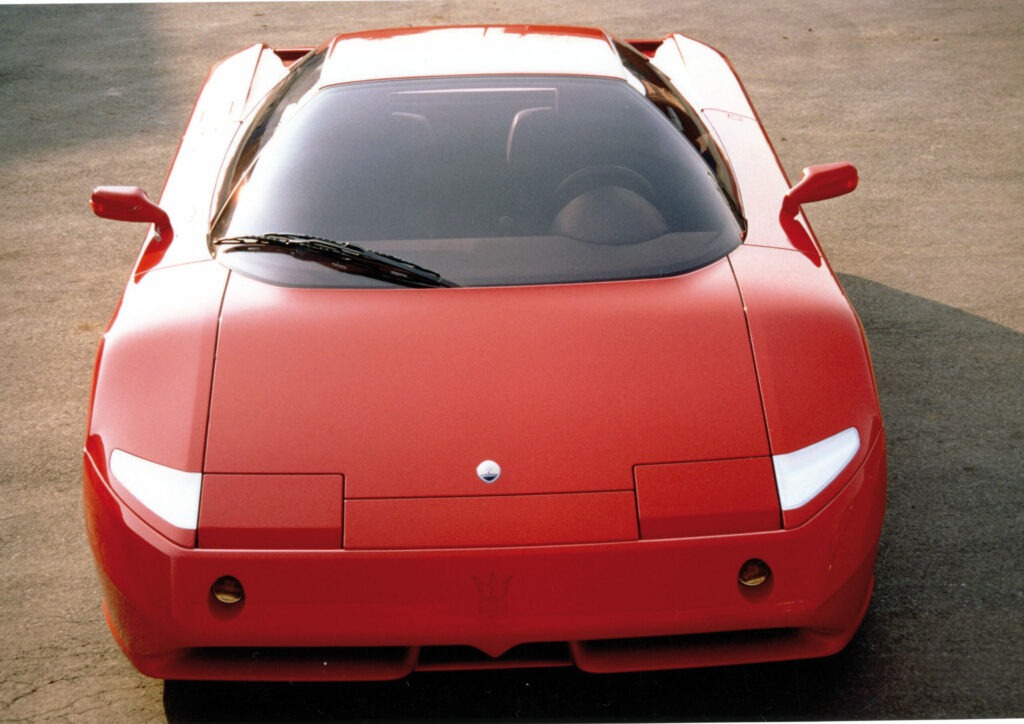
Designed to improve the car’s aerodynamic flows, the numerous air intakes cooled the car’s critical components, such as the braking system and the mechanical components of the engine, also giving it greater handling. The front had three main intakes: one central and two on the side. Just the side of the car carried out a fundamental calculation for aerodynamics, conveying the air towards the rear radiators and the engine compartment, with two rear vents that allowed the hot air to escape while increasing the aerodynamic load on the rear axle.
The flat bottom of the car and the particular F1 style rear extractors generated a ground effect, which further emphasized the dynamic performance of the Maserati Chubasco.
The name Chubasco is a sea storm that with its impetuous winds and violent rain showers scourges some areas overlooking Central America.
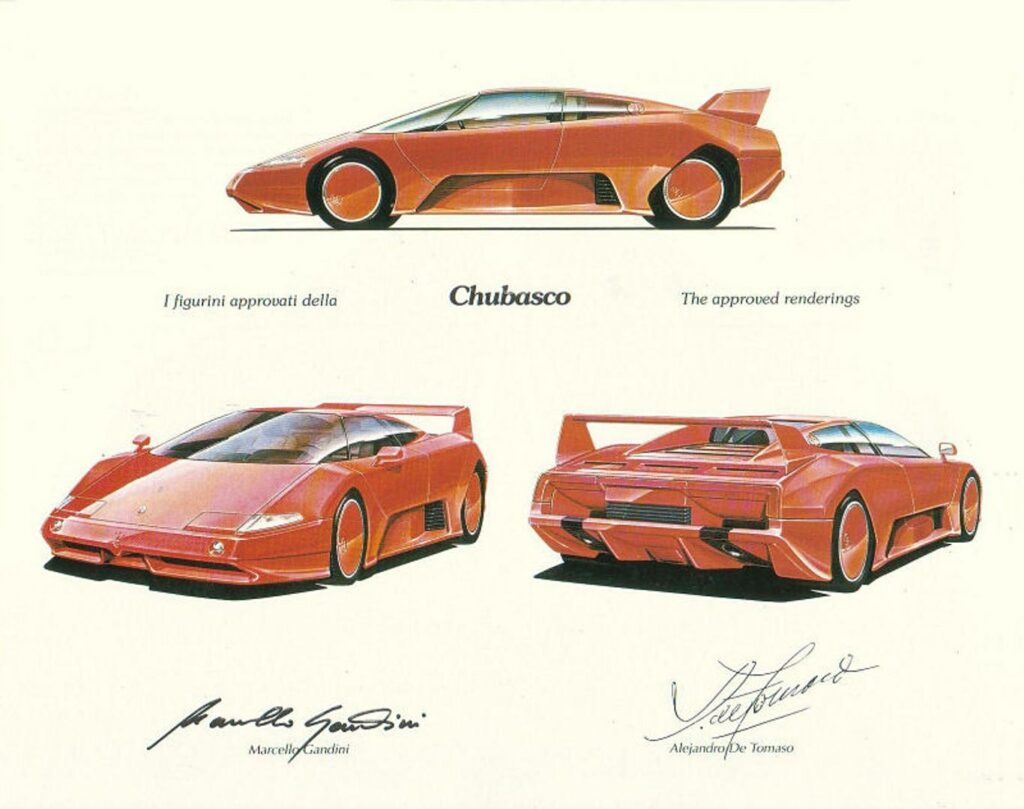
Conclusions
For the first time in the history of the Maserati brand, the Trident presented a mock up (non-running car) rather than an actually drivable prototype with many innovative solutions that were then taken up for future models
A road version of the Chubasco, which was originally scheduled for debut in 1992, given the many innovative solutions, would have cost too much, so production was aborted.
The Chubasco is part of the Panini collection.

